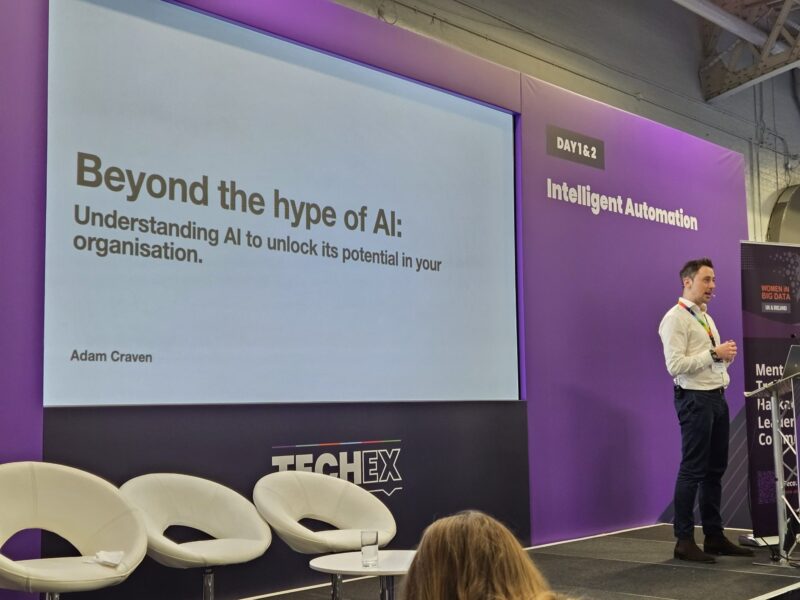During a presentation at the AI & Big Data Expo Global, Adam Craven, who serves as the Director at Y-Align, provided insights into the real-world uses of AI and highlighted the common challenges that tend to be underestimated amidst the excitement.
Drawing on his extensive experience in engineering and leadership roles at renowned companies such as McKinsey & Company, HSBC, and Nokia, Craven shared his expertise as a consultant, aiding C-level executives in navigating the intricate realm of AI implementation. His main emphasis was on the importance of gaining a comprehensive understanding of AI beyond the sensationalism, enabling organizations to make well-informed decisions that align with their strategic objectives.
Deconstructing the Hype Surrounding Artificial Intelligence
Craven introduced a methodical strategy for unraveling the mysteries of AI, underscoring the importance of breaking down the overarching concept into smaller, more manageable elements. He detailed essential characteristics of neural networks, embeddings, and transformers, with a particular emphasis on large language models as a common foundation.
- Artificial Neural Networks – Characterized as probabilistic and flexible, neural networks serve as the fundamental framework of AI, closely emulating the learning mechanisms observed in humans.
- Embeddings enable computers to traverse various levels of abstraction, in a manner somewhat resembling human cognitive processes.
- Transformers, with their “attention” mechanism, play a pivotal role in the AI revolution by empowering machines to grasp context and interpret meaning.
Large Language Models (LLMs) function as advanced search and research engines.
Craven evaluates the effectiveness of Large Language Models (LLMs) as standalone search engines. While they excel at comprehending search intent, they lack access to extensive data, providing accurate results, or referencing sources—essential components of a successful search process.

Nonetheless, Craven underscored that Large Language Models (LLMs) excel as potent summarization engines for research purposes. He emphasized their capacity to condense data, facilitate language translation, and act as valuable research assistants:

Craven further advised against depending exclusively on LLMs for intricate tasks, citing a study where consultants using language models demonstrated subpar performance in handling nuanced analyses.
Removing the Hype from Artificial Intelligence: Establishing Pragmatic Expectations
The presentation wrapped up with practical applications for organizations, including documentation tools, high-level decision-making, code review tools, and multimodal decision-making. Craven stressed the importance of carefully assessing when Large Language Models (LLMs) are beneficial, ensuring they align with an organization’s values and principles.
However, Craven cautioned against exaggerated claims regarding AI’s performance, citing instances where language models excelled in certain tasks but fell short in others. He encouraged the audience to consider context and nuances when evaluating AI’s impact, discouraging unrealistic expectations.
Craven provided actionable insights for implementation, urging organizations to collect data for future use, create test cases for specific scenarios, and employ a systematic framework for strategy development. The overarching focus remained on dispelling hype and strategically integrating AI into existing workflows, potentially resulting in significant cost savings.
In a world filled with promises of AI’s potential, Adam Craven’s pragmatic approach offers organizations a roadmap to harness AI’s capabilities while avoiding common pitfalls.











